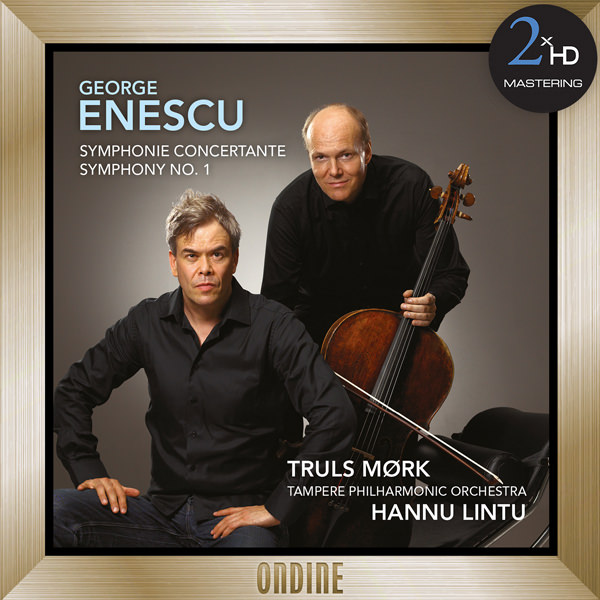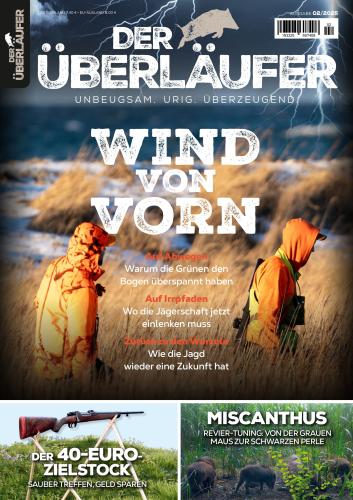
George Enescu – Symphonie Concertante; Symphony No. 1 – Truls Mork, Tampere Philharmonic Orchestra, Hannu Lintu (2016)
DSF Stereo DSD128, 1 bit/5,6 MHz | Time – 53:56 minutes | 4,25 GB | Genre: Classical
Studio Masters, Official Digital Download – Source: HDTracks | Booklet, Front Cover | © 2xHD/Ondine Oy, Helsinki
Recorded: Tampere Hall, Finland, 20-21 September 2013 (Symphony No. 1), 6-7 June 2014 (Symphonie Concertante)
The final release of the George Enescu (1881-1955) symphony cycle includes two neglected masterpieces: the 1st Symphony filled with youthful energy and the poetic and lyric Symphonie concertante for Cello and Orchestra. The soloist of the Symphony concertante is the award-winning cellist Truls Mørk.
Enescu wrote both of the works at a relatively young age: the Symphonie concertante was written at the age of 20 and the 1st Symphony was premiered when the composer was 25 years of age. Even so, Enescu had already created himself an impressive career as a composer with several large-scale works.
The Ondine recordings with Hannu Lintu and the Tampere Philharmonic Orchestra have proved to be extremely successful. The first release of the Enescu cycle received Gramophone Awards Nomination 2013. Hannu Lintu and the orchestra also received GRAMMY nomination for their recording of Rautavaara’s Kaivos Opera.
Both works featured here date from the first few years of the 20th century, a period when the prodigiously gifted George Enescu was yet to find his own compositional voice. Although the Symphonie Concertante of 1901 was written at around the same time as the famous Romanian Rhapsodies, there are few obvious allusions to Eastern European folk music in the virtuosic solo cello line. Instead, a distinctly French colouring underpins much of the harmony, suggesting the guiding hand of Enescu’s teacher Gabriel Fauré, whereas some of the orchestral interjections sound distinctly Brahmsian. Yet for all the panoply of musical influences, it’s an attractive composition, if not especially memorable in terms of melodic ideas. There’s no doubt however that Truls Mørk is an impassioned advocate delivering an intense and committed account of the cello part.
A similar fusion of German and French idioms is heard in the First Symphony of 1905, though by this stage Enescu’s harmonic style is far more chromatic and the elaborate late-Romantic orchestration often has a Straussian opulence. Hannu Lintu secures rhythmically incisive playing from the Tampere Philharmonic in the outer movements, and in general offers a far more dynamic view of the music than Gennady Rozhdestvensky and the BBC Philharmonic’s rather measured and somewhat stolid version on Chandos. Some of the most imaginative writing comes in the central slow movement where Lintu and his Finnish orchestra are in their element, encapsulating to perfection both the mysterious brooding harmonies of the introduction and the more ardent melodic ideas that follow suit. -Erik Levi, BBC Music Magazine
There’s something very ‘pre-Shostakovich’ about the austere chord that opens the 20-year-old Enescu’s Symphonie concertante, but thereafter this lyrical outpouring from 1901 is entirely characteristic. The mostly slow first movement ends in a flurry of solo activity; the brief Assez lent that follows pushes the intensity levels up a notch or two, whereas the finale, like the first movement, is in essence an unstoppable flow of melodic invention. Truls Mørk is top dollar in all key respects, his phrase-shaping sensitively inflected (just try his first entry), and his tone production as warm as anyone could wish for. A fair match, I’d say, for the equally excellent Alban Gerhardt, whose Hyperion recording (with the BBC Scottish Symphony Orchestra under Carlos Kalmar) also programmes music by Dohnányi and d’Albert.
Enescu’s First Symphony postdates the Symphonie concertante by four years and in terms of confidence and maturity marks a significant step forwards, from the assertive opening, through the expressive slow movement, to the finale, which opens very much in the manner of Brahms (Haydn Variations, Second Symphony). No need to sing the praises of Hannu Lintu and the Tampere Philharmonic in this repertoire. Their version of the Second Symphony (10/12 – coupled with the Chamber Symphony) earned itself a Gramophone Award nomination in 2013, whereas their coupling of the Concert Overture and Third Symphony (1/14) is consistent with its stablemates and scores top marks for both musical quality and technical excellence.
Lintu’s performance of the three-movement First Symphony more or less matches Cristian Mandeal and the Bucharest Philharmonic (Arte Nova) for tempo in the first movement, whereas Mandeal chooses marginally broader speeds for the next two. I much prefer the better-focused Lintu. As to the same coupling featuring the George Enescu State Philharmonic and the Orchestra of the Romanian Radio and Television with cellist Valentin Arcu (Marco Polo), slower tempi all round dull the effect, not to mention less distinctive playing both from the soloist and the orchestras. So a definite thumbs-up for Mørk and Lintu. -Rob Cowan, Gramophone
Tracklist:
George Enescu (1881-1955)
Symphonie Concertante for Cello and Orchestra in B flat minor, Op. 8
1. Assez lent – 10:35
2. Assez lent – 4:49
3. Majestueux 8:28
Symphony No. 1 in E flat major, Op. 13
4. I. Assez vif et rythmé 10:58
5. II. Lent 10:50
6. III. Vif et vigoureux 8:08
Personnel:
Truls Mørk, cello
Tampere Philharmonic Orchestra
Hannu Lintu, conductor
Download:
mqs.link_EnescuSymphnieCncertanteSymphnyN.1TrulsMrkTamperePHannuLintu2015HDTracksDSD128.part1.rar
mqs.link_EnescuSymphnieCncertanteSymphnyN.1TrulsMrkTamperePHannuLintu2015HDTracksDSD128.part2.rar
mqs.link_EnescuSymphnieCncertanteSymphnyN.1TrulsMrkTamperePHannuLintu2015HDTracksDSD128.part3.rar
mqs.link_EnescuSymphnieCncertanteSymphnyN.1TrulsMrkTamperePHannuLintu2015HDTracksDSD128.part4.rar
mqs.link_EnescuSymphnieCncertanteSymphnyN.1TrulsMrkTamperePHannuLintu2015HDTracksDSD128.part5.rar




















![Anne Sofie von Otter, Finnish Radio Symphony Orchestra, Hannu Lintu - Sibelius - Tapiola, En Saga & 8 Songs (2017) [FLAC 24bit/88,2kHz] Anne Sofie von Otter, Finnish Radio Symphony Orchestra, Hannu Lintu - Sibelius - Tapiola, En Saga & 8 Songs (2017) [FLAC 24bit/88,2kHz]](https://imghd.xyz/images/2022/09/18/0761195128954_600.jpg)
![Glenn Gould - The Complete Columbia Album Collection (2015 Remastered Edition) [Qobuz FLAC 24bit/44,1kHz] Glenn Gould - The Complete Columbia Album Collection (2015 Remastered Edition) [Qobuz FLAC 24bit/44,1kHz]](https://getimg.link/images/imgimgimg/uploads/2017/07/2bHwfbA.jpg)
![Truls Mørk, Håvard Gimse - Bridge, Britten, Debussy: Cello Sonatas (2022) [FLAC 24bit/96kHz] Truls Mørk, Håvard Gimse - Bridge, Britten, Debussy: Cello Sonatas (2022) [FLAC 24bit/96kHz]](https://imghd.xyz/images/2022/11/08/esvy7g2eopzub_600.jpg)
![George Enescu - Symphony No. 2 & Chamber Symphony - Tampere Philharmonic Orchestra, Hannu Lintu (2012/2015) [nativeDSDmusic DSF DSD64/2.82MHz] George Enescu - Symphony No. 2 & Chamber Symphony - Tampere Philharmonic Orchestra, Hannu Lintu (2012/2015) [nativeDSDmusic DSF DSD64/2.82MHz]](https://getimg.link/images/imgimgimg/uploads/2017/03/bXtqZVE.jpg)
![The Finnish Radio Symphony Orchestra & Hannu Lintu - Magnus Lindberg: Aura, Marea & Related Rocks (Live) (2021) [FLAC 24bit/48kHz] The Finnish Radio Symphony Orchestra & Hannu Lintu - Magnus Lindberg: Aura, Marea & Related Rocks (Live) (2021) [FLAC 24bit/48kHz]](https://i.postimg.cc/sXCY5BSr/00839ff4.jpg)
![Colin Currie, Truls Mork, Helsinki Philharmonic Orchestra, John Storgards - Rautavaara: Modificata, Towards the Horizon & Incantations (2012/2016) [HighResAudio DSF DSD64/2.82MHz] Colin Currie, Truls Mork, Helsinki Philharmonic Orchestra, John Storgards - Rautavaara: Modificata, Towards the Horizon & Incantations (2012/2016) [HighResAudio DSF DSD64/2.82MHz]](https://getimg.link/images/imgimgimg/uploads/2018/08/tIIVSES.jpg)
![Colin Currie, Truls Mork, Helsinki Philharmonic Orchestra, John Storgards - Rautavaara: Modificata, Towards the Horizon & Incantations (2012) [HighResAudio FLAC 24bit/96kHz] Colin Currie, Truls Mork, Helsinki Philharmonic Orchestra, John Storgards - Rautavaara: Modificata, Towards the Horizon & Incantations (2012) [HighResAudio FLAC 24bit/96kHz]](https://getimg.link/images/imgimgimg/uploads/2018/03/f91XCSa.jpg)
![Jean Sibelius - Lemminkainen Legends & Pohjola’s Daughter - Finnish Radio Symphony Orchestra, Hannu Lintu (2015) [HighResAudio FLAC 24bit/48kHz] Jean Sibelius - Lemminkainen Legends & Pohjola’s Daughter - Finnish Radio Symphony Orchestra, Hannu Lintu (2015) [HighResAudio FLAC 24bit/48kHz]](https://getimg.link/images/imgimgimg/uploads/2017/03/4Rpkl1F.jpg)
![Itzhak Perlman - The Complete Warner Recordings 1972-1980 (2015) [FLAC 24bit/96kHz] Itzhak Perlman - The Complete Warner Recordings 1972-1980 (2015) [FLAC 24bit/96kHz]](https://getimg.link/images/imgimgimg/uploads/2019/12/IpmBmeR.jpg)
![Hannu Lintu - Magnus Lindberg: Tempus fugit & Violin Concerto No. 2 (2018) [FLAC 24bit/48kHz] Hannu Lintu - Magnus Lindberg: Tempus fugit & Violin Concerto No. 2 (2018) [FLAC 24bit/48kHz]](https://getimg.link/images/imgimgimg/uploads/2019/04/0qwvquG.jpg)
![Michael Tilson Thomas, The San Francisco Symphony - The Mahler Project (2010) [FLAC 24bit/96kHz] Michael Tilson Thomas, The San Francisco Symphony - The Mahler Project (2010) [FLAC 24bit/96kHz]](https://getimg.link/images/imgimgimg/uploads/2017/01/HHDTsz0.jpg)
![Wolfgang Amadeus Mozart: Piano Concertos Nos 22 & 24 - Angela Hewitt, Hannu Lintu, National Arts Centre Orch (2014) [hyperion-records FLAC 24bit/96kHz] Wolfgang Amadeus Mozart: Piano Concertos Nos 22 & 24 - Angela Hewitt, Hannu Lintu, National Arts Centre Orch (2014) [hyperion-records FLAC 24bit/96kHz]](https://getimg.link/images/imgimgimg/uploads/2016/08/hDIsI5x.jpg)
![Fumiaki Miura, Deutsches Symphonie-Orchester Berlin, Hannu Lintu - Tchaikovsky, Mendelssohn: Violin Concertos (2015) [Ototoy FLAC 24bit/96kHz] Fumiaki Miura, Deutsches Symphonie-Orchester Berlin, Hannu Lintu - Tchaikovsky, Mendelssohn: Violin Concertos (2015) [Ototoy FLAC 24bit/96kHz]](https://getimg.link/images/imgimgimg/uploads/2018/04/QkQrKXE.jpg)
![Max Emanuel Cencic - Handel: Ottone, HWV 15 (2017) [Qobuz FLAC 24bit/96kHz] Max Emanuel Cencic - Handel: Ottone, HWV 15 (2017) [Qobuz FLAC 24bit/96kHz]](https://getimg.link/images/imgimgimg/uploads/2017/11/9uXCAkQ.jpg)
![Pacifica Quartet - Dmitri Shostakovich and his Contemporaries: The Soviet Experience Vol. 1-4 (2011-2013) [24bit FLAC] Pacifica Quartet - Dmitri Shostakovich and his Contemporaries: The Soviet Experience Vol. 1-4 (2011-2013) [24bit FLAC]](https://getimg.link/images/imgimgimg/uploads/2017/07/ntIbtOp.jpg)